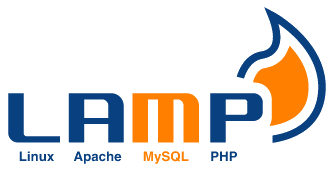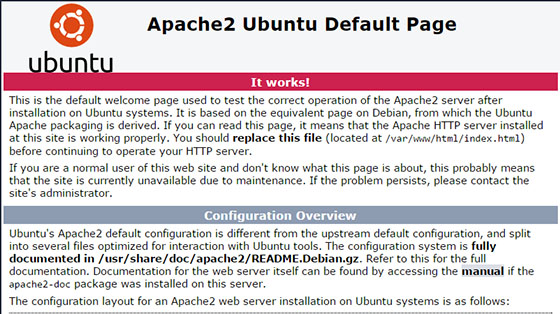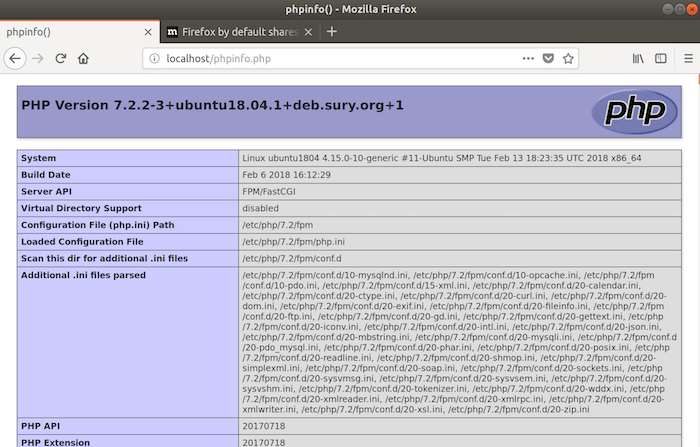
In this tutorial, we will show you how to install the LAMP stack on your Ubuntu 18.04 LTS. For those of you who didn’t know, LAMP represents a full-featured stack containing the most popular web server known as Apache, the most popular database server MySQL and the most popular open-source web programming language known as PHP. All components are free and open-source software, and the combination is suitable for building dynamic web pages.
This article assumes you have at least basic knowledge of Linux, know how to use the shell, and most importantly, you host your site on your own VPS. The installation is quite simple. I will show you the step-by-step installation of LAMP (Linux Apache, MySQL, and PHP) on the Ubuntu 18.04 LTS Bionic Beaver server.
Prerequisites
- A server running one of the following operating systems: Ubuntu 18.04 LTS.
- It’s recommended that you use a fresh OS install to prevent any potential issues.
- SSH access to the server (or just open Terminal if you’re on a desktop).
- A
non-root sudo useror access to theroot user. We recommend acting as anon-root sudo user, however, as you can harm your system if you’re not careful when acting as the root.
Install LAMP Stack on Ubuntu 18.04 LTS Bionic Beaver
Step 1. First, make sure that all your system packages are up-to-date by running the following apt-get commands in the terminal.
apt-get update apt-get upgrade
Step 2. Installing Apache web server on Ubuntu 18.04 LTS Bionic Beaver.
We will be installing Apache with apt-get, which is the default package manager for ubuntu:
apt-get install -y apache2 apache2-utils
After installing Apache2, the commands below can be used to stop, start and enable Apache2 service to always start up with the server boots:
systemctl enable apache2 systemctl start apache2 systemctl status apache2
Check Apache version:
apache2 -v
You can verify that Apache is really running by opening your favorite web browser and entering the URL http://your-server's-address, if it is installed, then you will see this:

Step 3. Installing MariaDB on Ubuntu 18.04 LTS Bionic Beaver.
Now that we have our web server up and running, it is time to install MariaDB. MariaDB is a database management system. Basically, it will organize and provide access to databases where our site can store information:
sudo apt-get install mariadb-server mariadb-client
After installing MariaDB, the commands below can be used to stop, start, and enable the MariaDB service to always start up when the server boots:
systemctl status mariadb systemctl enable mariadb systemctl start mariadb
By default, MariaDB is not hardened. You can secure MariaDB using the mysql_secure_installation script. you should read and below each step carefully which will set a root password, remove anonymous users, disallow remote root login, and remove the test database and access to secure MariaDB:
mysql_secure_installation
Configure it like this:
- Set root password? [Y/n] y - Remove anonymous users? [Y/n] y - Disallow root login remotely? [Y/n] y - Remove test database and access to it? [Y/n] y - Reload privilege tables
To log into MariaDB, use the following command (note that it’s the same command you would use to log into a MySQL database):
mysql -u root -p
Step 4. Installing PHP 7.2 on Ubuntu 18.04 Bionic Beaver.
At the time of this writing, PHP7.2 is the latest stable version of PHP and has a minor performance edge over PHP7.0. Enter the following command to install PHP7.2:
apt-get install software-properties-common add-apt-repository ppa:ondrej/php
Run the commands below to install PHP 7.2 FPM and related modules:
apt-get update apt-get install php7.2 libapache2-mod-php7.2 php7.2-common php7.2-mbstring php7.2-xmlrpc php7.2-soap php7.2-gd php7.2-xml php7.2-intl php7.2-mysql php7.2-cli php7.2-zip php7.2-curl
After installing PHP and related modules, all you have to do is restart Apache2 to reload PHP configurations:
systemctl restart apache2
To test PHP, create a test file named info.php with the content below. Save the file, then browse to it to see if PHP is working:
nano /var/www/html/info.php
In this file, paste the following code:
<?php phpinfo(); ?>
Try to access it at http://your_server_ip_address/info.php. If the PHP info page is rendered in your browser then everything looks good and you are ready to proceed further.

Congratulations! You have successfully installed the LAMP stack. Thanks for using this tutorial for installing LAMP (Linux Apache, MySQL, and PHP) in Ubuntu 18.04 LTS (Bionic Beaver) system. For additional help or useful information, we recommend you to check the official Apache, MySQL, and PHP web site.